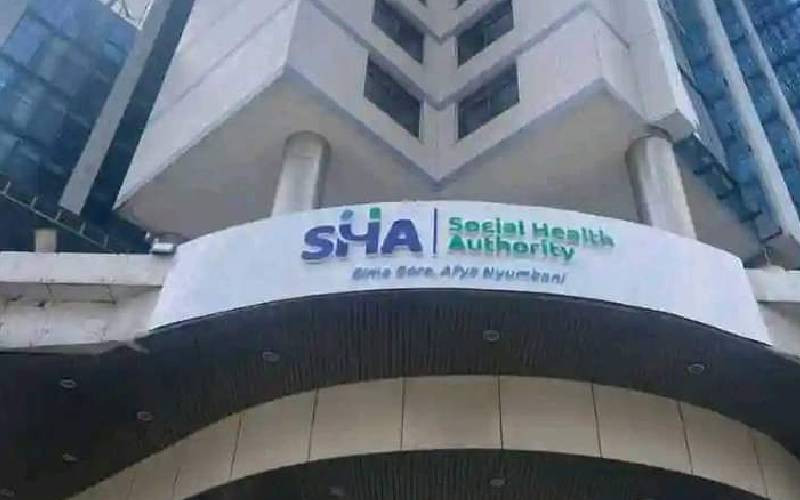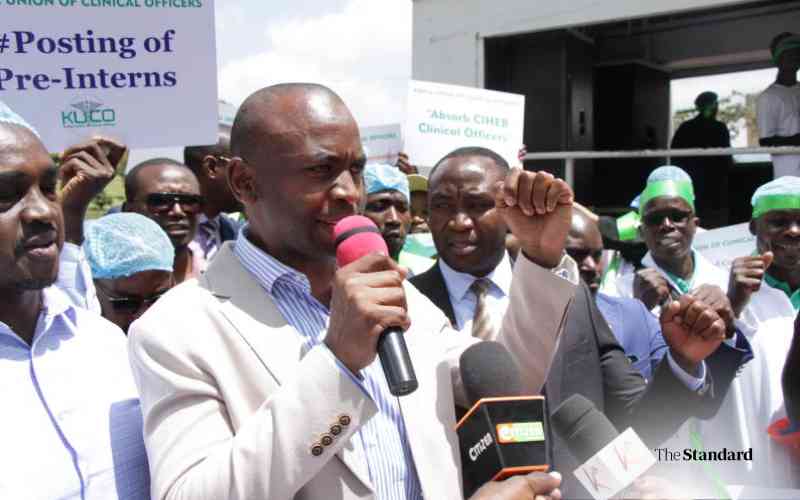Analysis shows the cost of treating diabetes and hypertension can come down to as low as Sh150 monthly for 35,000 people
BY MICHAEL ORIEDO
With changes in lifestyles, cases of diabetes and hypertension are on the rise, affecting people of all age groups.
The diseases have become a burden to those affected, as cost of treatment soars to unaffordable levels.
The worst hit are the poor, who have to spend at least Sh2,000 each month on drugs that help in management of the diseases.
The high cost is hindering the fight against the diseases, which continue to exert pressure on the health system.
But there is hope that the prohibitive cost may soon come down. Health experts are working on a model aimed at bringing down the cost of managing the diseases.
“We have done analysis and it shows the cost of treating diabetes and hypertension can come down to as low as one or two dollars a year for a total of 35,000 people living with the diseases,” said Dr Steven Van de Vijver, a senior research officer at African Population and Health Research Centre (APHRC).
Two diseases
The project is being tested in Korogocho slums, which is among areas worst hit by the two diseases in Nairobi.
Research done in the area indicates that 17 per cent of adults in the slums are either hypertensive or diabetic.
For those aged 60 and above, out of every ten, four are hypertensive, diabetic or both.
“The model involves screening all people aged 35 years and above, who are at risk of contracting diabetes and hypertension. Those found to suffer from the diseases are put into support groups,” explained Dr Van de Vijver.
It starts with community health workers visiting residents at their homes where they screen them for the two diseases. “We are working with 48 community health workers and a population of 35,000 people. The health workers ask residents questions on lifestyle, which include if they smoke, drink alcohol or exercise,” said Dr Van de Vijver, who added they publicised the programme in barazas, churches and community radio.
Attend clinics
Stay informed. Subscribe to our newsletter
Residents who are found with high sugar level and blood pressure are referred to a clinic in the slum.
“We later organise them into support groups. They are supposed to attend group meetings regularly where they also learn about nutrition,” he noted.
However, the main aim of being in groups is to contribute money to buy drugs at a subsidised cost and encourage each other to attend clinics.
“If more than 80 per cent of people in a group attend clinic, the cost of drugs, which is currently Sh150 per month, having dropped from Sh250, goes to Sh100. This helps to create peer pressure so that members of a group can encourage each other to attend clinics for prices of drugs to come down,” explained the medical doctor.
The model was arrived at after researchers found out that most people were not attending clinics and taking medicine due to high costs.
“We worked with Boston Consulting Group, a global consultant firm, while developing the model. We calculated the cost of treating hypertension and diabetes, which included payment of community health workers and nurses and found it can come down to one or two dollars annually,” said Van de Vijver, who is one of the principal researchers from APHRC working on the model.
Crisis level
The model is becoming a success. “Our aim is to prove to Government that it is possible to reduce costs of managing lifestyle diseases, especially if patients are organised in groups, where attending clinics and taking drugs works as a motivation to reduce costs,” noted Van de Vijver on the project dubbed Sustainable Model for Cardiovascular Health by Adjusting Lifestyle and Treatment with Economic Perspective.
Ms Elizabeth Mutimba, a community health worker in Korogocho notes that cases of diabetes and hypertension in the slums are reaching a crisis level.
“I walk in the informal settlement screening residents’ blood pressure and sugar level and I can attest that diabetes and hypertension have affected many people,” she said.
High cost of treatment, according to the health worker, has seen people resort to ‘dubious’ means of managing the diseases.
“Some go to chemists and buy painkillers when they are feeling unwell. They take the drugs and move on with their lives,” said Mutimba.
It is a practice that is fast picking up in the slums going by the number of people who are keeping off treatment.
Unmanageable
“Patients start treatment but disappear soon after because they find the cost prohibitive. Others are diagnosed with the disease and start taking drugs, but stop after they do not get better as in the case of diseases like malaria,” explained the health worker, who noted support groups devised in the model are helping people access drugs.
Ms Ardh Huka is among residents of Korogocho living with diabetes and hypertension.
Huka, 60, was diagnosed with diabetes in 2009 and started treatment. She took the drugs consistently for two years and stopped after finding the cost unmanageable.
“The costs were high and I was feeling better. I did not see the need of continuing to spend much money on drugs yet I was ‘healthy’,” recounted Huka, who hopes the cost of treating diabetes and hypertension will come down.
Dr Van de Vijver noted cases such as those of Huka, which are exacerbated by the high cost of drugs, are common among patients.
He sees hope for patients in the model, which he is optimistic the Government would adopt and scale up in other parts of the country once conclusively results come out next year.
“Just like HIV and Aids, diabetes and hypertension management is crucial in winning the war against the diseases. The fight against HIV has been successful because of accessibility of drugs, which is what should happen with cardiovascular diseases that are continuing to affect hundreds of people,” he observed.
 The Standard Group Plc is a
multi-media organization with investments in media platforms spanning newspaper
print operations, television, radio broadcasting, digital and online services. The
Standard Group is recognized as a leading multi-media house in Kenya with a key
influence in matters of national and international interest.
The Standard Group Plc is a
multi-media organization with investments in media platforms spanning newspaper
print operations, television, radio broadcasting, digital and online services. The
Standard Group is recognized as a leading multi-media house in Kenya with a key
influence in matters of national and international interest.
 The Standard Group Plc is a
multi-media organization with investments in media platforms spanning newspaper
print operations, television, radio broadcasting, digital and online services. The
Standard Group is recognized as a leading multi-media house in Kenya with a key
influence in matters of national and international interest.
The Standard Group Plc is a
multi-media organization with investments in media platforms spanning newspaper
print operations, television, radio broadcasting, digital and online services. The
Standard Group is recognized as a leading multi-media house in Kenya with a key
influence in matters of national and international interest.





